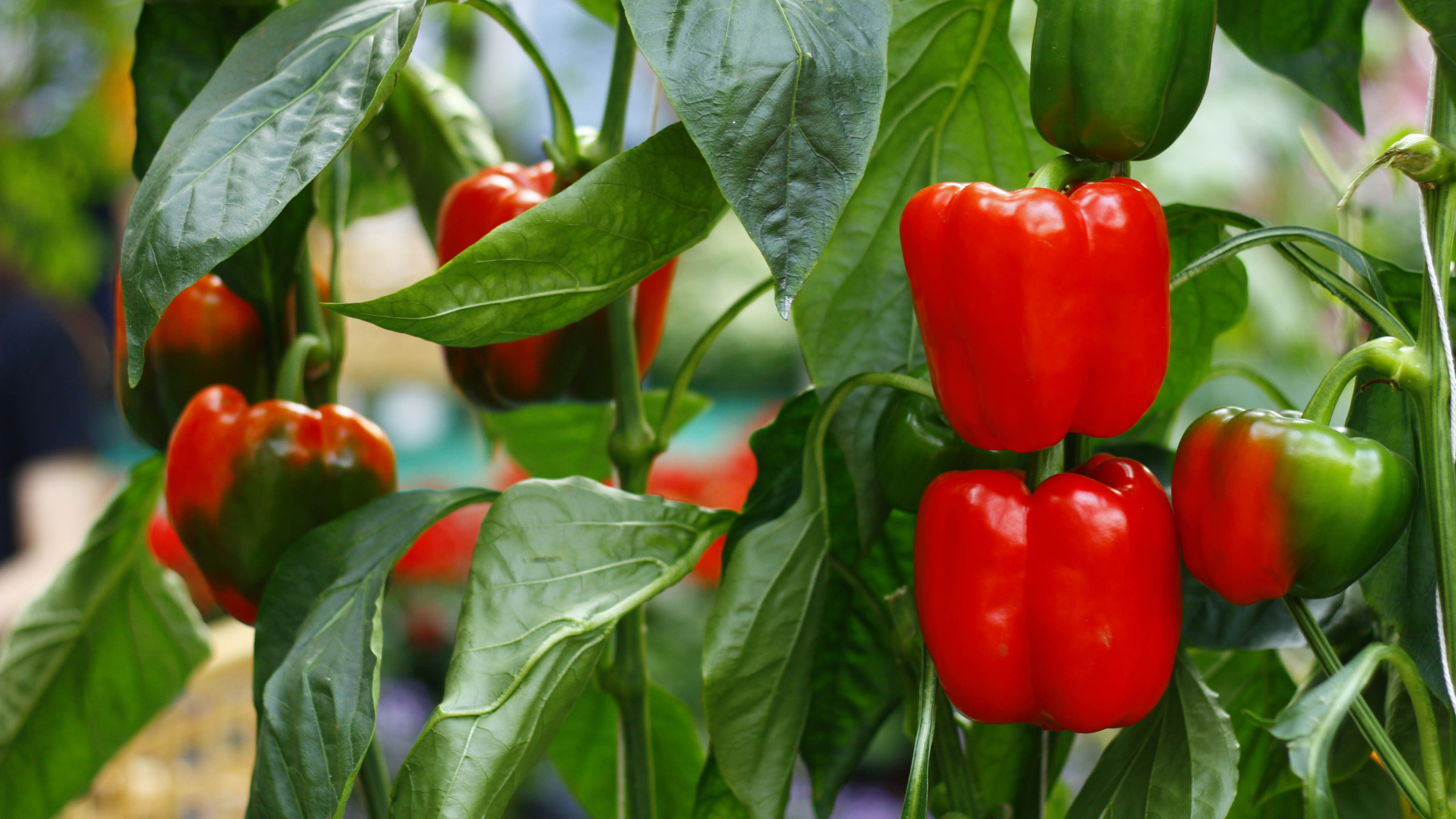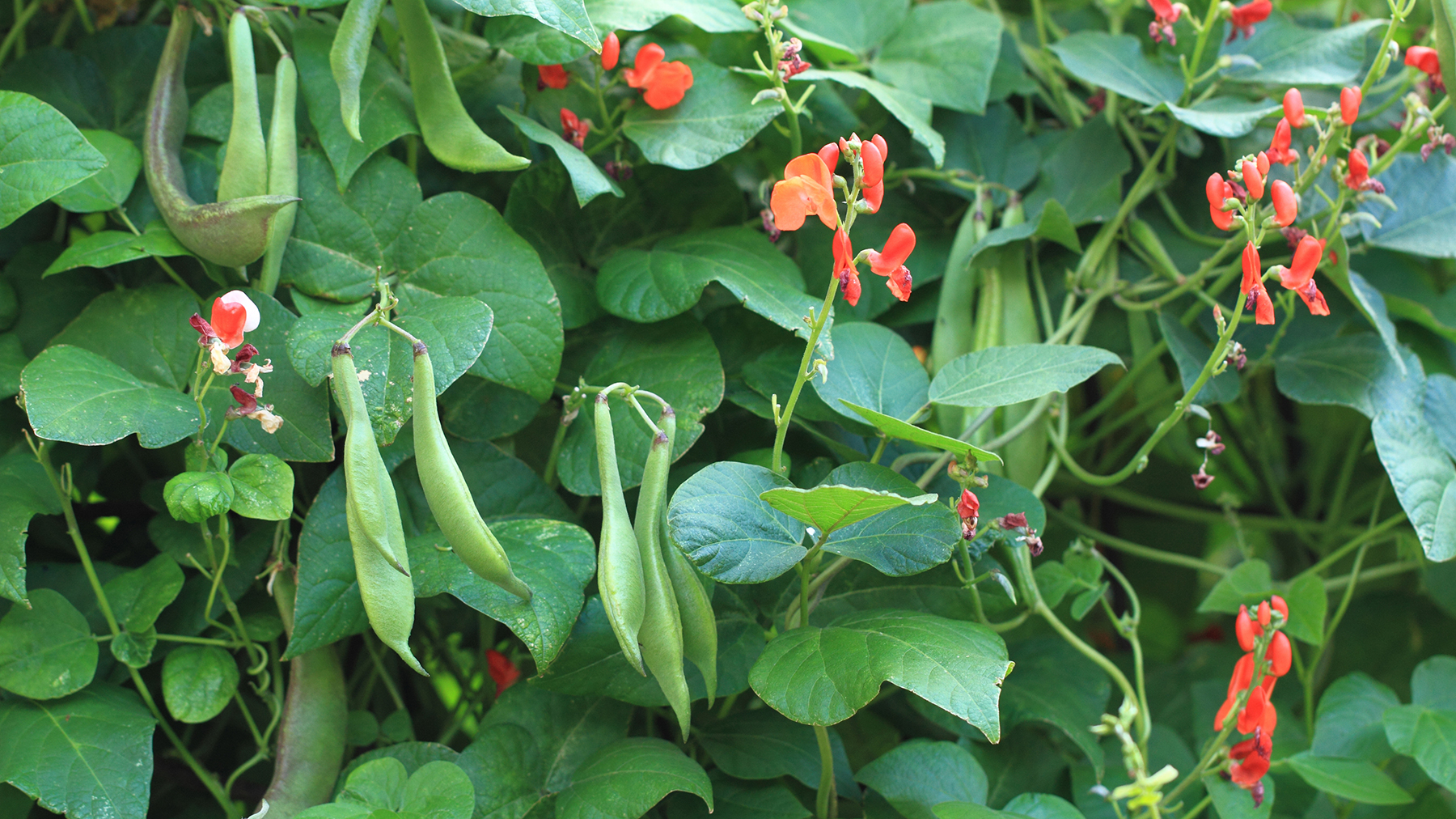
There are many benefits of growing your own vegetables. Apart from the delight of watching seeds sprout and young plants grow, you get the enjoyment of nurturing and harvesting your own veg that can be eaten fresh from the garden.
And, of course, there’s also the environmental bonus of producing your crop without buying produce from the supermarket that’s traveled hundreds of miles while wrapped in plastic.
With warmer climes and the last frost behind us, May is the perfect time to start sowing and planting vegetables in your yard. So, whether you’ve got a dedicated vegetable patch, a raised bed or a small container, grab your best gardening gloves and embrace growing your own.
Seeds versus plants
Gary Pilarchik, garden author and owner of the Rusted Garden, says one benefit of growing seeds over plants is the cost saving. “Buying garden transplants can easily cost $4 or $5 a plant. A pack of seeds is only about $2, and you get enough seeds for many seasons.”
I know this from personal experience growing zucchini for the first time last year. I kept the remaining seeds in the original packet and stored them inside my house, although Pilarchik advises keeping them in a Ziplock bag. I enjoy watching them sprout and grow indoors before I transplant them outside.
1. Cucumbers

If you are a new gardener, Pilarchik suggests cucumbers are an easy crop to grow directly outside. “Place three seeds in the form of a triangle, about 1 inch apart, press them in about ½ inch deep, and cover them with soil,” he explains.
He recommends removing the smallest plant, once all three seeds have germinated, after about 5-7 days. Removing the weakest plant will give the remaining two the best chance of strong, healthy growth.
“Cucumbers can be left to sprawl on the ground, or you can plant them next to a trellis and grow them vertically,” he adds.” Vertical growing saves spaces and helps you manage pests and diseases more easily.” It’s also ideal if you have a small garden.
However, if you'd prefer not to grow cucumbers direct into your soil, they are one of the vegetables you can grow in pots.
How to build a simple trellis
Pilarchik suggests making a simple trellis using two or three 6-foot wooden stakes or metal T-posts. “Place them into the ground, about 3 feet apart. Use a thicker piece of string or a clothing line to create the trellising for the cucumber plants to climb up. Tie a line of rope from post to post every 6 inches until you get to the top.”
You can continue to plant warm season crops through the summer and even in early fall.
Increase your crop
Cucumbers can often get “beat up” over the season, so rather than trying to save a plant that is “on its way out”, Pilarchik recommends planting another round of cucumbers in late June or early July. “The new plants will quickly mature, and you can continue harvesting over the summer.” If you are lucky and have a long growing season, they can also be planted again in mid-August.”
2. Tomatoes

Nothing beats a homegrown tomato. Lindsey Hyland, owner of Urban Organic Yield, agrees. “Tomatoes are my absolute favorite, not just for those dipping their toes into gardening, but for pros as well.”
But is it best to grow tomatoes from seeds or plant seedlings? While Hyland says seedlings can “really give you a leap into the season”, Pilarchik says it can limit your choice of varieties you grow. This may not be a problem if you are new to growing your own, but if you are more experienced, you’ll probably want to experiment with different types.
“Cherry tomatoes can be easily grown from direct seeding,” says Pilarchik. “Place three seeds 2 inches apart across the planting hole, press them in ½ inch deep, and cover. They will germinate in 7-10 days.
“Cherry tomatoes are fast growers and very prolific. After about one week of growth, keep only the strongest plant.”
“Planting multiple seeds helps ensure you get a germinating plant. Planting one seed may seem frugal, but if it doesn’t germinate, you are out of luck and time is wasted,” advises Pilarchik.
Tomatoes love the sun
Tomatoes will do best in a sunny position. “Whether you’re working with container gardens or traditional beds, give your tomatoes a spot bathing in sunlight and make sure they receive plenty of water,” advises Hyland. “A little trick I’ve learned is to water them early in the day to reduce water loss and keep diseases at bay.”
Knowing how often you should water tomato plants to avoid them being under or overwatered depends on whether they are seedlings or mature plants. The environmental conditions will also make an impact.
Stake your tomatoes
Apart from the sun and plenty of water, tomatoes benefit from being staked to help support them as they grow upwards, and not doing so is one of the mistakes to avoid when growing tomatoes. Pilarchik suggests placing a 6-8-foot post next to the seeds when sowing. Once the main vine starts to grow, it can be tied loosely to the post at 6-inch intervals.
Give them space
Another consideration when growing tomatoes is to give them plenty of room to grow. “Space your tomato plants 3-4 feet apart if you want to grow more than one plant,” says Pilarchik. “It is important to have spacing between them to allow for good airflow to help manage disease issues. You can do this for any tomato plant that matures in about 90 days."
3. Zucchini

Just like tomatoes, zucchini is another warm-soil-loving crop, which Pilarchik says performs best when grown from seed. I started my own seeds indoors in mid-April and they are now almost ready to harden off before planting outside. However, Pilarchik recommends planting them directly into the soil, placing two seeds 1 inch deep and 3 inches apart.
You can expect them to germinate within 5-7 days, then leave them to grow for seven days before removing the weakest plant. He also recommends growing one to two plants at a time. I grew four plants last year and had a bumper crop — harvesting far too many for my family of four. Although, we did enjoy plenty of zucchini risotto and zucchini bread.
Zucchini does not need trellising like some vegetables, but Pilarchik advises spacing them at least 3 feet apart as they get large and bush out.
Problems to watch out for
“Zucchini can be prone to powdery mildew and vine borers,” says Pilarchik. “One way to combat these problems is to have another location in mind for a zucchini plant. After your first plants have been growing for 4-5 weeks, plant some more seeds. By doing this succession type planting, you can often plant through the disease cycles and pest life cycles and the new plants begin to mature without worry of future damage or problems.”
What’s more, zucchini can be ready for harvest in as little as 30-45 days, once germination occurs, meaning you can plant them multiple times over the summer.
4. Peppers

If you’re looking to add some heat to your vegetable patch, peppers are the perfect addition, “with varieties from sweet to fiery adding a kick to your yard”, says Hyland.
“I get them started indoors as little seedlings, well before the last expected frost, moving them outside when the weather agrees, “she adds. Then, they should be planted 18 to 24 inches apart in a sunny position.
However, you can sow seeds directly into your garden 10-14 days after the last frost date. Plant 4-6 pepper seeds ½ inch deep and 18 inches apart. Once the seedlings have two leaves, thin them to a single plant.
They do best in well-drained soil, so planting them in a raised bed will help if you have heavy, wet soil. Hyland also recommends laying down some mulch as this helps to retain moisture.
Keep pests at bay
Like many vegetables, peppers are prone to pest attacks, but companion planting — planting different crops together to boost crop production — can help. Hyland says basil is a good companion plant because it keeps pests at bay. It’s also beneficial to use within patio areas as it repels mosquitoes.
5. Beans

One of my fond childhood summer memories is watching my grandparents tying back their pole beans. Although I wasn’t a fan of their taste at the time, I enjoyed the sight of the fresh beans and the beautiful bright orange flowers.
Hyland is also an advocate. “Beans have earned their space in my garden year after year. Their generous produce and straightforward care make them unbeatable.
“You can go with climbing pole beans or the more compact bush types — both grow well from seeds planted directly in your garden. I enrich the earth with some organic compost beforehand.”
“My secret is keeping the soil evenly moist, especially during blooms and bean formation,” says Hyland.
Pilarchik describes pole beans as a “very prolific and nutritious vegetable” which are often overlooked. As a bonus, “they require minimal maintenance and produce extremely well,” he adds. He prefers pole beans over bush beans because they take up less space.
When planting, he recommends placing two 6-8 foot posts about 2 feet apart in the ground before adding string to the trellis in 4-inch rows. “Place three seeds at the base of the trellis about 1 inch deep and cover.” You can expect the seeds to germinate in 5-7 days, then keep the two strongest plants.
Beans can be planted every 45 days, giving you an endless crop to enjoy through the warmer months.







